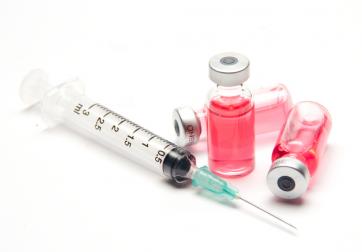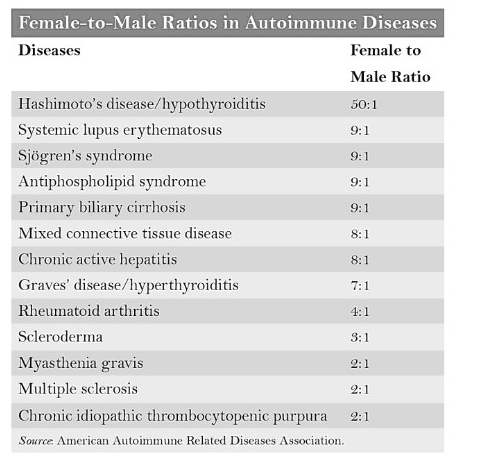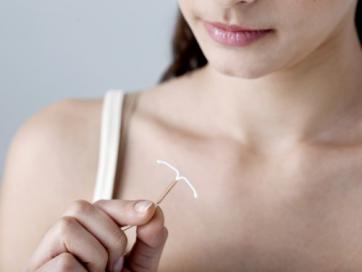 Biological differences between the sexes could be a significant predictor of responses to vaccines, according to researchers at the Johns Hopkins Bloomberg School of Public Health. They examined published data from numerous adult and child vaccine trials and found that sex is a fundamental, but often overlooked predictor of vaccine response that could help predict the efficacy of combating infectious disease.
Biological differences between the sexes could be a significant predictor of responses to vaccines, according to researchers at the Johns Hopkins Bloomberg School of Public Health. They examined published data from numerous adult and child vaccine trials and found that sex is a fundamental, but often overlooked predictor of vaccine response that could help predict the efficacy of combating infectious disease.
“Sex can affect the frequency and severity of adverse effects of vaccination, including fever, pain and inflammation,” said Sabra Klein, PhD, lead author of the review and an assistant professor at the Bloomberg School’s W. Harry Feinstone Department of Molecular Microbiology and Immunology. “This is likely due to the fact that women typically mount stronger immune responses to vaccinations compared to men. In some cases, women need substantially less of a vaccine to mount the same response as men. Pregnancy is also a factor that can alter immune responses to vaccines.”
Researchers conducted a review of existing literature on several vaccines including yellow fever, influenza, measles, mumps and rubella, hepatitis and herpes simplex to obtain evidence of the difference in responses between women and men. They also examined the effect hormonal changes that occur during pregnancy have on vaccine efficacy. Researchers found that despite data supporting a role for sex in the response to vaccines, most studies did not document sex-specific effects in vaccine efficacy or induced immune responses.
“Understanding the biological differences between men and women to vaccines could have led to better distribution of the H1N1 vaccine during the early months. Our review of the literature found that healthy women often generated a more robust protective immune response to vaccination when compared to men,” said Andrew Pekosz, PhD, associate professor at the Bloomberg School’s W. Harry Feinstone Department of Molecular Microbiology and Immunology. “An understanding and appreciation of the effect of sex and pregnancy on immune responses might change the strategies used by public health officials to start efficient vaccination programs, optimizing the timing and dose of vaccines so that the maximum number of people are immunized.” added Klein.
“The Xs and Y of Immune Responses to Viral Vaccines” was written by Sabra L. Klein, Anne Jedlicka and Andrew Pekosz.
Source: Johns Hopkins Newscenter

 Two recent studies just emphasized how important breast-feeding can be...for mothers. One study found that women who breast-feed may have more protection against a "particularly vicious type of breast cancer," while another report suggests breast-feeding can have positive implications for women who had gestational diabetes to avoid becoming lifelong diabetics. Prior research names other benefits too--such as decreased risk for breast and ovarian cancers, Type 2 diabetes, and rheumatoid arthritis.
Two recent studies just emphasized how important breast-feeding can be...for mothers. One study found that women who breast-feed may have more protection against a "particularly vicious type of breast cancer," while another report suggests breast-feeding can have positive implications for women who had gestational diabetes to avoid becoming lifelong diabetics. Prior research names other benefits too--such as decreased risk for breast and ovarian cancers, Type 2 diabetes, and rheumatoid arthritis.  As the holidays approach, we may be more aware of the stresses surounding our working lives. Perhaps you always have a stressful job, or perhaps projects become more stressful when attempting to complete projects before the new year deadline. Whatever the reason, our jobs can be stressful and it is important to know how this stress can impact our cardiovascular health. In fact, women who report having high job strain have a 40 percent increased risk of cardiovascular disease, including heart attacks and the need for procedures to open blocked arteries, compared to those with low job strain.
As the holidays approach, we may be more aware of the stresses surounding our working lives. Perhaps you always have a stressful job, or perhaps projects become more stressful when attempting to complete projects before the new year deadline. Whatever the reason, our jobs can be stressful and it is important to know how this stress can impact our cardiovascular health. In fact, women who report having high job strain have a 40 percent increased risk of cardiovascular disease, including heart attacks and the need for procedures to open blocked arteries, compared to those with low job strain. The Centers for Disease Control and Prevention (CDC) report on sexually transmitted diseases reveals increased STD rates, especially among men. Cases of chlamydia, gonorrhea, and syphilis have all increased and are the three most common STDs in the united States. Here are the numbers: in 2014, there were over 1.4 million cases of chlamydia, 350,000 cases of gonorrhea, and nearly 20,000 cases of syphilis in the United States--representing significant percentage increases since 2013. And these are just numbers from documented cases--there may be people who have these diseases but are not yet presenting with symptoms or are not seeking medical help, says Dr. Gail Bolan, director of the CDC's Division of Sexually Transmitted Disease Prevention.
The Centers for Disease Control and Prevention (CDC) report on sexually transmitted diseases reveals increased STD rates, especially among men. Cases of chlamydia, gonorrhea, and syphilis have all increased and are the three most common STDs in the united States. Here are the numbers: in 2014, there were over 1.4 million cases of chlamydia, 350,000 cases of gonorrhea, and nearly 20,000 cases of syphilis in the United States--representing significant percentage increases since 2013. And these are just numbers from documented cases--there may be people who have these diseases but are not yet presenting with symptoms or are not seeking medical help, says Dr. Gail Bolan, director of the CDC's Division of Sexually Transmitted Disease Prevention.  Autoimmune diseases are those where the body, for whatever reason, starts fighting its own cells with an immune response in the same way it would if the cells were a foreign invader (bacteria, virus etc). Women are more likely to get a whole host of autoimmune diseases than men are (see table to the left), including multiple sclerosis, rheumatoid arthritis, and lupus. Apparently, out of all the people suffering from auto-immune diseases in the US, 80% are female. That’s a phenomenal bias for a condition that, on the surface at least, has no clear tie to gender. According to the research (great review
Autoimmune diseases are those where the body, for whatever reason, starts fighting its own cells with an immune response in the same way it would if the cells were a foreign invader (bacteria, virus etc). Women are more likely to get a whole host of autoimmune diseases than men are (see table to the left), including multiple sclerosis, rheumatoid arthritis, and lupus. Apparently, out of all the people suffering from auto-immune diseases in the US, 80% are female. That’s a phenomenal bias for a condition that, on the surface at least, has no clear tie to gender. According to the research (great review  Currently, 60% of women are using birth control (with over 99% of women having used it in their lifetime)--from the pill, hormone shots, and non-hormonal methods (like the diaphragm). But now, more and more women are turning to intrauterine devices (IUDs) as their choice of contraception.
Currently, 60% of women are using birth control (with over 99% of women having used it in their lifetime)--from the pill, hormone shots, and non-hormonal methods (like the diaphragm). But now, more and more women are turning to intrauterine devices (IUDs) as their choice of contraception.  Eileen Pollack, author of "The Only Women in the Room: Why Science is Still a Boys' Club" wrote an
Eileen Pollack, author of "The Only Women in the Room: Why Science is Still a Boys' Club" wrote an  The female hormone estrogen is known to offer protection for the heart, but obesity may be taking away that edge in adolescent girls. Research from the University of California at Merced finds that although obesity does not help teens of either gender, it has a greater impact on girls’ blood pressure than it does on boys’. In a study of more than 1,700 adolescents between 13 and 17 years old, obese boys were 3.5 times more likely to develop elevated systolic blood pressure (SBP) than non-obese boys, but similarly obese girls were 9 times more likely to develop elevated systolic blood pressure than their non-obese peers.
The female hormone estrogen is known to offer protection for the heart, but obesity may be taking away that edge in adolescent girls. Research from the University of California at Merced finds that although obesity does not help teens of either gender, it has a greater impact on girls’ blood pressure than it does on boys’. In a study of more than 1,700 adolescents between 13 and 17 years old, obese boys were 3.5 times more likely to develop elevated systolic blood pressure (SBP) than non-obese boys, but similarly obese girls were 9 times more likely to develop elevated systolic blood pressure than their non-obese peers. No methods currently exist for the early detection of Alzheimer’s disease, which affects one out of nine people over the age of 65. However, an interdisciplinary team of Northwestern University scientists and engineers has developed a noninvasive MRI approach that can detect the disease in a living animal. And it can do so at the earliest stages of the disease, well before typical Alzheimer’s symptoms appear.
No methods currently exist for the early detection of Alzheimer’s disease, which affects one out of nine people over the age of 65. However, an interdisciplinary team of Northwestern University scientists and engineers has developed a noninvasive MRI approach that can detect the disease in a living animal. And it can do so at the earliest stages of the disease, well before typical Alzheimer’s symptoms appear. Although women make up over half the U.S. population, they have, historically been underrepresented in clinical research. As a result, clinical trials that included both men and women largely examined the average reactions in treatments across both sexes, instead of examining sex as a variable. This is problematic becuase researchers are unable to learn how women and men may react in unique ways to new drugs or therapies; indeed, there have been higher instances of women having adverse effects than men in medications and other treatments.
Although women make up over half the U.S. population, they have, historically been underrepresented in clinical research. As a result, clinical trials that included both men and women largely examined the average reactions in treatments across both sexes, instead of examining sex as a variable. This is problematic becuase researchers are unable to learn how women and men may react in unique ways to new drugs or therapies; indeed, there have been higher instances of women having adverse effects than men in medications and other treatments.